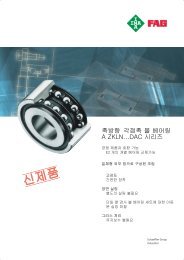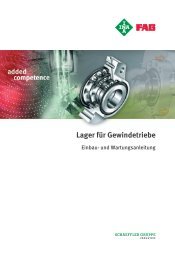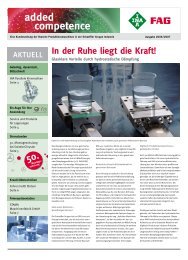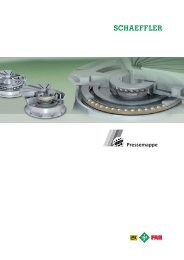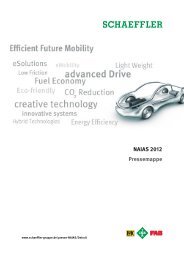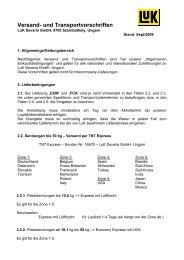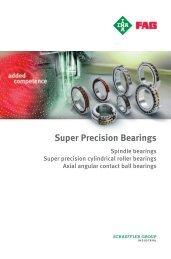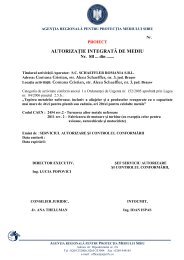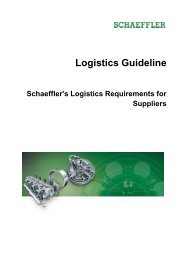Create successful ePaper yourself
Turn your PDF publications into a flip-book with our unique Google optimized e-Paper software.
2 <strong>Clutch</strong> <strong>and</strong> <strong>release</strong> <strong>system</strong><br />
ance compared to the over-center springs used<br />
today. In the example shown in Figure 24, the<br />
maximum pedal load is reduced by 65 N whilst<br />
achieving the desired return load of 15 N. It is<br />
worth noting that the operation is virtually frictionless<br />
(low hysteresis increase).<br />
This concept can be used to cover applications<br />
up to 500 Nm with a desired pedal load of 110 N.<br />
Design limits are set by the permissible stresses<br />
in the leaf spring <strong>and</strong> the surface pressure<br />
between the roller bearing <strong>and</strong> coulisse track.<br />
Multi-plate clutch<br />
By multiplying the number of friction surfaces,<br />
the multi-plate clutch is able to reduce the operating<br />
load. In a twin-plate clutch, for instance,<br />
the operating load can be lowered by 40 % with<br />
the same moment of transmission. Some of the<br />
benefit is lost in ensuring the separation of the<br />
two clutch plates.<br />
In addition to the load benefits, the multi-plate<br />
clutch also provides improved thermal capacity<br />
<strong>and</strong> the potential to reduce the diameter of the<br />
clutch. About 20 mm more axial installation<br />
space is required.<br />
LuK now has several twin-plate clutches in<br />
st<strong>and</strong>ard production for engine torques above<br />
500 Nm. These clutches all take advantage of<br />
the proven SAC technology.<br />
Figure 25 Design <strong>and</strong> characteristic curves of a twin-plate SAC<br />
External energy to<br />
reduce pedal loads<br />
Passive <strong>system</strong>s are limited based on their<br />
efficiency. LuK currently believes that a pedal<br />
load of 110 N can be achieved with engine<br />
torques up to 500Nm using the current passenger<br />
car sector pedal travels (120 ... 160 mm)<br />
<strong>and</strong> clutch dimensions. For applications above<br />
500 Nm for which a twin-plate clutch cannot<br />
be used, there is the option of actively supporting<br />
the clutch pedal in a manner similar to<br />
power-assisted steering. In order to make the<br />
expense of an active <strong>system</strong> pay off, LuK currently<br />
envisages the following application<br />
areas:<br />
• Required pedal loads below 110 N<br />
for applications between 400 Nm<br />
<strong>and</strong> 500 Nm<br />
• Applications above 500 Nm<br />
• Shortening pedal travel/redefining<br />
ergonomics<br />
• Applications outside the automotive<br />
sector (e.g., commercial vehicles,<br />
tractors)<br />
• Retrofits<br />
• Optional equipment<br />
40 LuK SYMPOSIUM 2006



